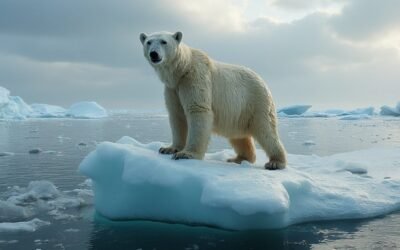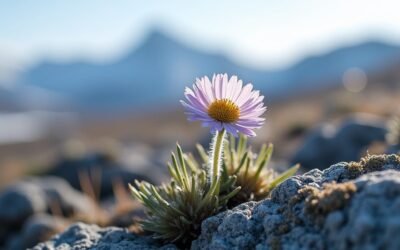Witness the alluring Arctic migration of harp seals, easily identifiable by their harp-shaped markings. Traversing up to 2,500 kilometers, they gather on Arctic pack ice during the breeding season from February to March. Breeding and pupping are concentrated during this period, with up to 2,000 seals per square kilometer. Factors like pack ice availability and conservation efforts impact their migration. Conservation measures, such as Total Allowable Catch limits, aim to protect these seals, but climate change poses ongoing challenges by reducing sea ice cover. Learn about the remarkable journey and the considerable efforts in place to guarantee their survival.
Main Points
- Harp seals migrate up to 2,500 kilometers, diving as deep as 274 meters for fish like capelin, cod, and herring.
- The ideal time to observe harp seals is during their breeding season from February to March on Arctic pack ice.
- During breeding season, up to 2,000 seals can be found per square kilometer, making it a prime time for witnessing pupping activities.
- Climate change impacts, such as reduced sea ice cover, significantly affect harp seal migration and breeding patterns.
- Conservation efforts include setting Total Allowable Catch limits, advocating for regulations, and promoting sustainable marine ecosystem management.
Understanding Harp Seals
Understanding harp seals requires an appreciation of their distinctive physical characteristics, migratory behavior, and ecological role in the Arctic and northern Atlantic regions. Harp seals are easily recognizable by their distinct harp-shaped markings on the dorsal side and flanks. These markings are more pronounced in adult males compared to females. Measuring approximately 1.5-2 meters in length and weighing around 130 kilograms, these seals have an average lifespan of 30-35 years.
Breeding season for harp seals takes place on pack ice from February to March. During this period, females give birth to pups, which initially have a yellow coat that turns white within days, earning them the name "whitecoat." This adaptation helps in camouflaging against the icy surroundings, offering protection from predators.
Harp seals exhibit notable migratory behavior, traveling up to 2,500 kilometers across the Arctic and Atlantic Oceans. Their feeding habits are diverse, primarily consuming fish such as capelin, cod, and herring, as well as crustaceans like krill. They dive to depths of up to 274 meters to forage for food. This varied fish diet is essential for their energy needs, especially during the demanding periods of Arctic migration and breeding season.
Migration Patterns
Harp seals undertake extensive journeys annually, traveling up to 2,500 kilometers to navigate between feeding grounds and breeding sites. These highly migratory mammals follow distinct migration patterns within three primary populations: the Northwest Atlantic, East Greenland, and the Barents Sea. The migration is intrinsically linked to the availability of pack ice, which serves as a vital platform during the breeding season from February to March.
During this period, harp seals congregate on the pack ice to give birth and nurse their pups, capitalizing on the relatively stable environment provided by the ice floes. Post-breeding, the seals set off on their Arctic journey in search of food. Their diet largely consists of fish and crustaceans, including species such as capelin, cod, herring, halibut, krill, and shrimps. These feeding grounds are scattered across the vast expanse of the Arctic waters, necessitating their extensive travel.
Understanding these migration patterns is essential for conservation efforts, as the harp seals' reliance on pack ice makes them particularly vulnerable to the effects of climate change. The annual journey of these seals is a remarkable proof of their adaptability and the intricate balance of Arctic marine ecosystems.
Best Time to See
The ideal period to observe the Arctic migration of harp seals is during their breeding season, typically spanning from February to March. This is when the seals gather on the pack ice in the Arctic, providing a prime opportunity to witness their migration. The breeding grounds become densely populated, with up to 2,000 seals per square kilometer. This congregation creates a remarkable spectacle, as the seals engage in breeding and pupping activities.
During this period, the birth of pups adds a dynamic element to the scene. Newborns, with their distinctive white fur, can be seen nuzzling close to their mothers. Observers have the rare chance to witness the natural behaviors and interactions within the seal community. The sight of adult seals tending to their young, vocalizing, and establishing social bonds offers rich insights into their life cycle.
Conservation Efforts
Ensuring the continued spectacle of harp seals' Arctic migration requires significant conservation efforts to protect these populations from threats such as commercial hunting and habitat disruption. Central to these efforts are strict regulations, such as the Total Allowable Catch (TAC) limits in Canada, which aim to prevent overexploitation during the hunting season. However, despite these measures, concerns persist regarding declining populations, prompting increased advocacy for more stringent protection measures.
Conservation groups play an important role in safeguarding harp seals and ensuring sustainable management practices. By raising awareness about the importance of these marine mammals and their habitats, these organizations work hard to maintain healthy marine ecosystems. Their work underscores the significance of harp seals in the Arctic and northern Atlantic Oceans, emphasizing the need for continuous and enhanced conservation strategies.
- Total Allowable Catch (TAC) limits: Set to prevent overexploitation and manage sustainable hunting practices.
- Advocacy for stricter regulations: Aimed at addressing concerns about declining populations and ensuring long-term protection.
- Conservation of marine ecosystems: Efforts focus on the broader impact of harp seals on the health of marine environments.
- Raising awareness: Educational initiatives highlight the significant role of harp seals in the Arctic migration and broader ecological context.
These inclusive efforts are vital in ensuring that future generations can continue to witness the remarkable journey of the harp seals.
Impact of Climate Change
Climate change is profoundly altering Arctic marine ecosystems, with significant consequences for harp seals' migratory patterns. The reduction in sea ice cover, driven by warming trends, is one of the most pivotal factors impacting Arctic seals. As sea ice diminishes, the availability of nutrients in the water column also shifts, thereby affecting the marine food web at its base. Stable nitrogen isotopes are vital indicators used by scientists to track these changes and detect signs of ecosystem restructuring.
Research, including the ARISE project at the University of Liverpool, underscores the broader impacts of climate change on Arctic marine ecosystems. The ARISE project's findings illustrate how anthropogenic drivers have been influencing these ecosystems for over 60 years, leading to long-term transformations. These changes affect not only the physical environment but also the biological communities dependent on it, including harp seals.
The decline in sea ice and alterations in nutrient availability force harp seals to adjust their migratory routes and feeding habits, which can have cascading effects throughout the ecosystem. Understanding these dynamics is paramount for developing effective conservation strategies and mitigating the impacts of climate change on Arctic wildlife.
How Does the Arctic Migration of Harp Seals Help Them Adapt to Climate Change?
The Arctic migration of harp seals helps them adapt to changing temperatures by allowing them to follow ice patterns for breeding and feeding grounds. As sea ice diminishes, harp seals and climate change are closely linked, with their survival increasingly dependent on shifting habitats and food sources.
What Specific Polar Clothing is Recommended When Witnessing the Harp Seals’ Arctic Migration?
When witnessing the harp seals’ Arctic migration, it’s essential to wear insulated layers, waterproof boots, thermal gloves, and windproof jackets. The recommended polar clothing for arctic conditions ensures proper protection from the freezing temperatures and strong winds in this extreme environment, allowing you to fully enjoy the experience while staying warm.
Conclusion
To wrap up, the migration of harp seals presents a remarkable natural phenomenon that offers significant insights into the species' behavior and ecological importance. Observing these migrations requires understanding their patterns, best viewing times, and the conservation efforts in place to protect them. Additionally, the impact of climate change on their habitat underscores the urgency for continued research and proactive measures. This knowledge is essential for ensuring the long-term survival of harp seals and the preservation of Arctic ecosystems.


